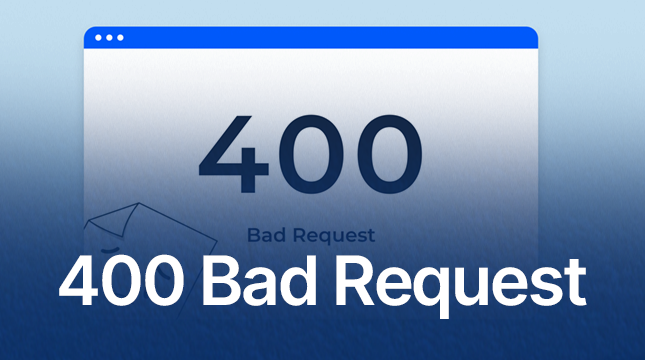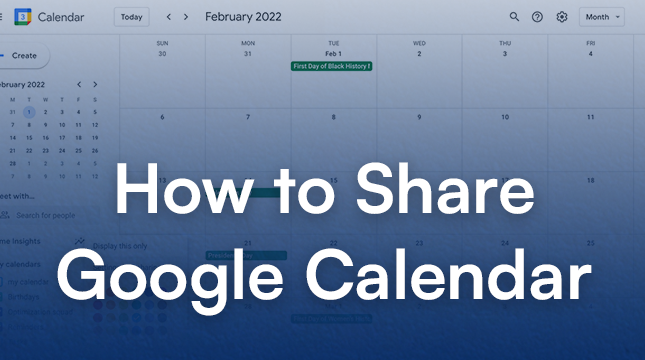This website uses cookies so that we can provide you with the best user experience possible. Cookie information is stored in your browser and performs functions such as recognising you when you return to our website and helping our team to understand which sections of the website you find most interesting and useful.
Understanding the 400 Bad Request Error: Causes, Fixes, and Prevention

Encountering a 400 Bad Request error can be frustrating, especially when you’re trying to access a website or an API. This common HTTP status code indicates that the server could not understand the request due to invalid syntax. In this blog post, we’ll dive deep into what a 400 Bad Request error is, explore its causes, and provide actionable tips on how to fix and prevent it.
What is a 400 Bad Request Error?
A 400 Bad Request error is an HTTP status code that indicates that the server was unable to process the request sent by the client because of client-side issues. This error can appear in various ways on different websites, often displayed as:
- “400 Bad Request”
- “HTTP Error 400”
- “400 – Bad Request”
- “Bad Request – Invalid URL”
Common Causes of a 400 Bad Request Error
Several factors can trigger a 400 Bad Request error. Understanding these causes is the first step towards fixing and preventing them.
1. Malformed Syntax
If the syntax of the request is incorrect, the server will not be able to process it. This can happen due to typographical errors in the URL or incorrect use of query parameters.
2. Large Request Size
Sending too much data in a request can lead to a 400 error. This often occurs when uploading large files or sending too much data in a single request.
3. Corrupted Browser Cache or Cookies
Sometimes, corrupted cookies or a problematic cache can interfere with the request, causing a 400 error.
4. Invalid or Expired Cookies
Cookies help track session information. If a cookie is invalid or expired, the server might reject the request, resulting in a 400 error.
5. DNS Issues
Problems with the Domain Name System (DNS), such as incorrect DNS settings or cache, can cause a 400 error by making the URL invalid.
6. Incorrect URL
A misspelled URL or an incorrectly formatted URL can lead to a 400 Bad Request error.
Read More : 502 Bad Gateway Error | Netizens Technologies
How to Fix a 400 Bad Request Error
If you’re encountering a 400 Bad Request error, here are some steps you can take to resolve it:
1. Check the URL
Ensure that the URL is correctly typed and properly formatted. Look out for any extra characters or spaces that might have been mistakenly added.
2. Clear Browser Cache and Cookies
Clearing your browser’s cache and cookies can often resolve a 400 error. Here’s how to do it:
- For Google Chrome: Go to Settings > Privacy and security > Clear browsing data.
- For Firefox: Go to Options > Privacy & Security > Cookies and Site Data > Clear Data.
- For Safari: Go to Preferences > Privacy > Manage Website Data > Remove All.
3. Reduce the Size of the Request
If you’re sending large amounts of data, try reducing the size of the request. This might involve compressing files or splitting the data into smaller chunks.
4. Flush DNS
Clearing your DNS cache can fix DNS-related issues. You can do this by running the following command in the Command Prompt (Windows) or Terminal (Mac)
ipconfig /flushdns
5. Disable Browser Extensions
Sometimes, browser extensions can interfere with requests. Disable all extensions and try again. If the issue is resolved, enable each extension one by one to identify the culprit.
6. Try a Different Browser
Switching to a different browser can help determine if the issue is browser-specific. If the error doesn’t appear in another browser, the problem likely lies with your original browser.
Read More : HTTP Error 500: Decoding the Internal Server Error and Troubleshooting Tips
How to Prevent 400 Bad Request Errors
Preventing 400 Bad Request errors is crucial for maintaining a smooth user experience. Here are some best practices:
1. Validate User Input
Ensure that all user inputs are validated on both the client-side and server-side to prevent malformed requests.
2. Limit Data Size
Implement limits on the amount of data that can be sent in a single request to avoid overwhelming the server.
3. Monitor Server Logs
Regularly monitoring server logs can help identify patterns or specific requests that trigger 400 errors, allowing for quicker resolution.
4. Implement Proper Error Handling
Design your application to handle errors gracefully. Provide clear and user-friendly messages when a 400 error occurs, guiding users on what to do next.
5. Keep Software Updated
Ensure that your web server and related software are always updated to the latest versions to avoid known bugs and vulnerabilities that might cause 400 errors.
Read More : Syntaxerror: cannot use import statement outside a module
Conclusion
A 400 Bad Request error is a common yet preventable issue that can disrupt user experience. By understanding its causes and implementing the fixes and preventive measures outlined in this blog, you can minimize the occurrence of this error and maintain a seamless browsing experience for your users. If you have any further questions or need assistance, feel free to leave a comment below. Happy browsing!

Let's Start Your Project
Get free consultation for your digital product idea to turn it into reality!
Get Started






